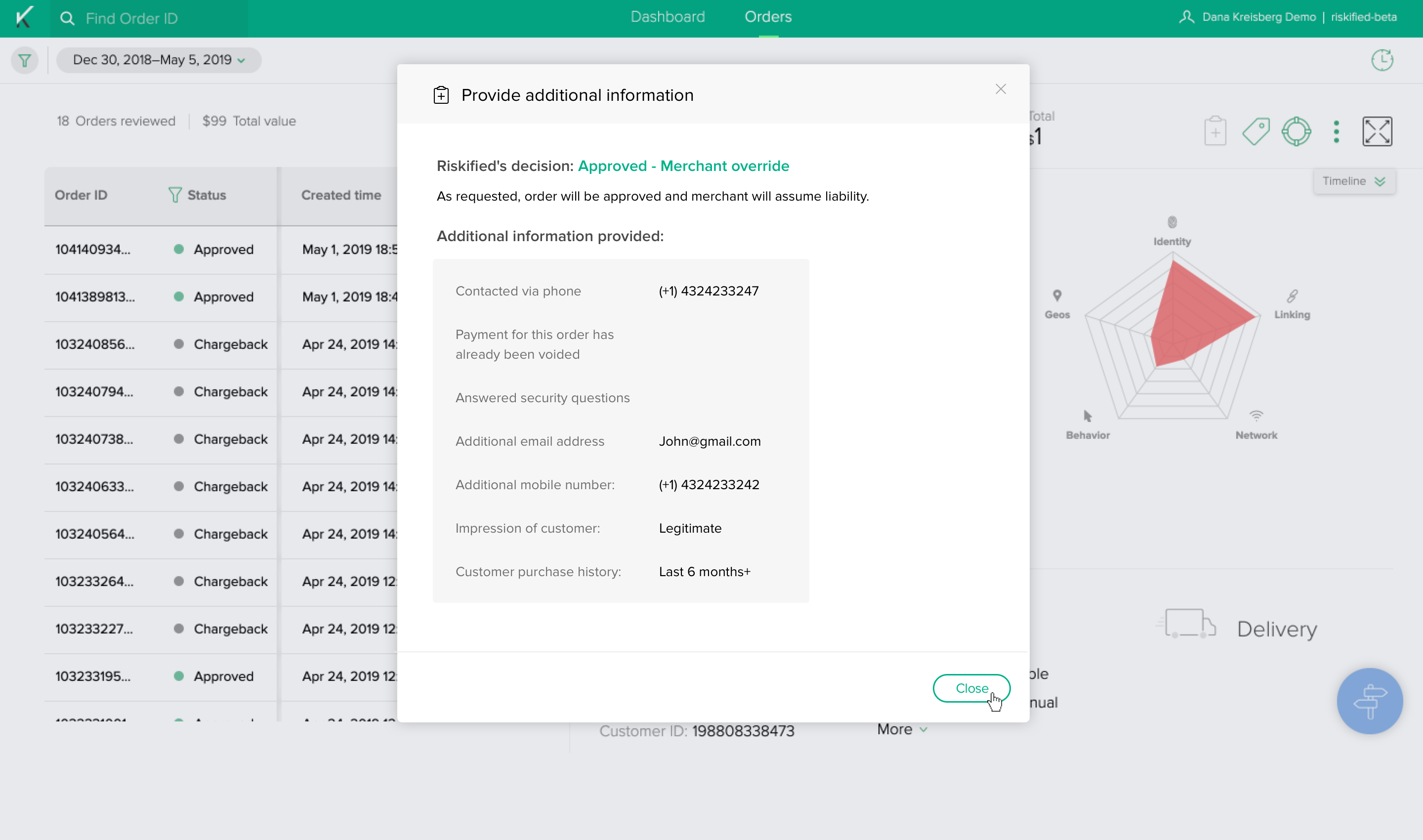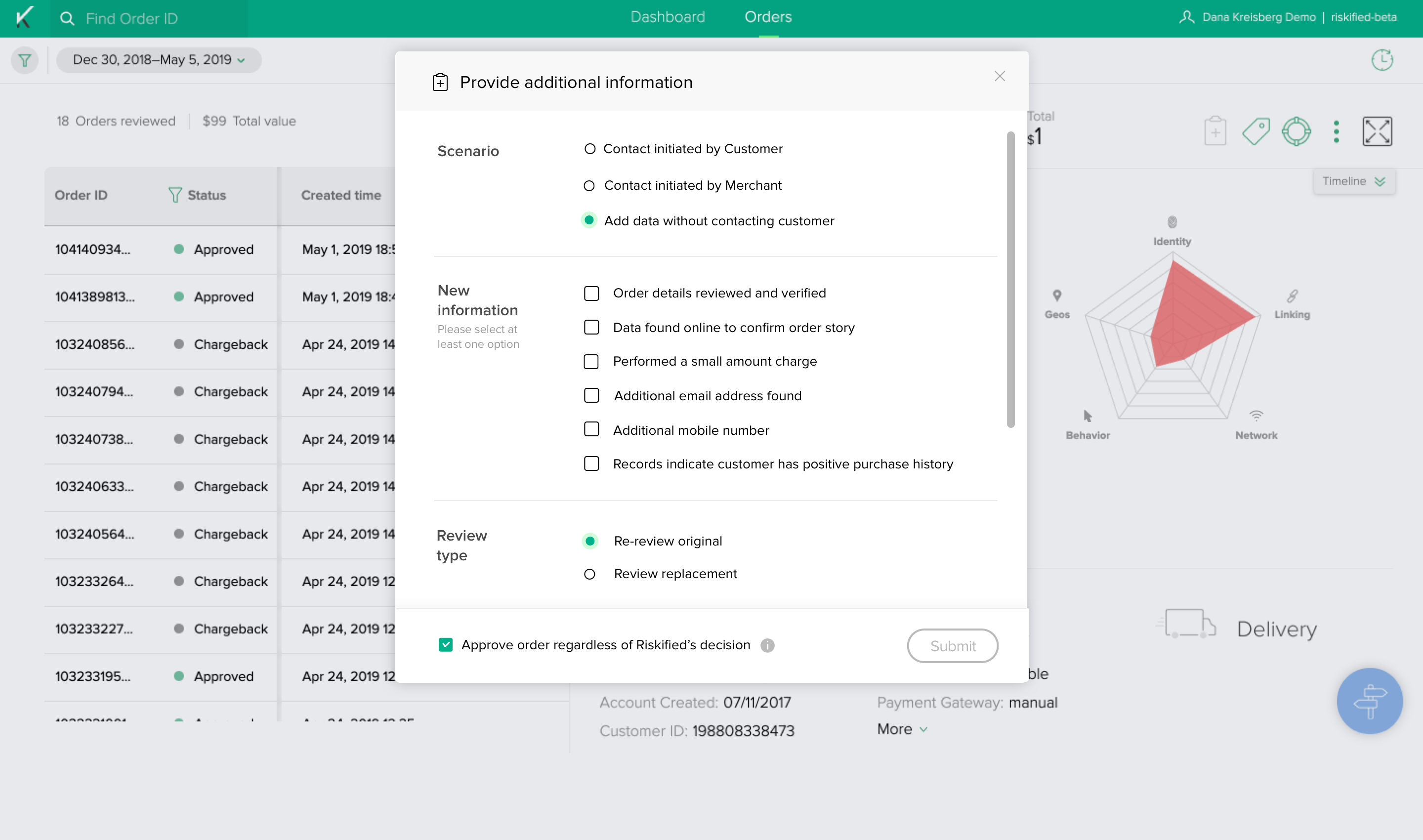Riskified web app
Riskified’s customers and app users are e-commerce merchants. The app provides them full transparency on Riskified’s decisions over their orders as well as supplementary data on segments of interest.
There are two types of end-users:
1. Administrators
They want to get a general overview on the orders transferred to Riskified, approval rates and decline reasons for each order.
These users mostly use the dashboard view.
2. Customer support
They are in contact with the merchant’s customers and their job is to perform actions related to specific orders such as submitting chargebacks, filing disputes over Riskified’s decisons and so on. These users are more exposed to the “Orders” tab which allows access to a specific order’s view and actions related to it.

1/ Dashboard tab
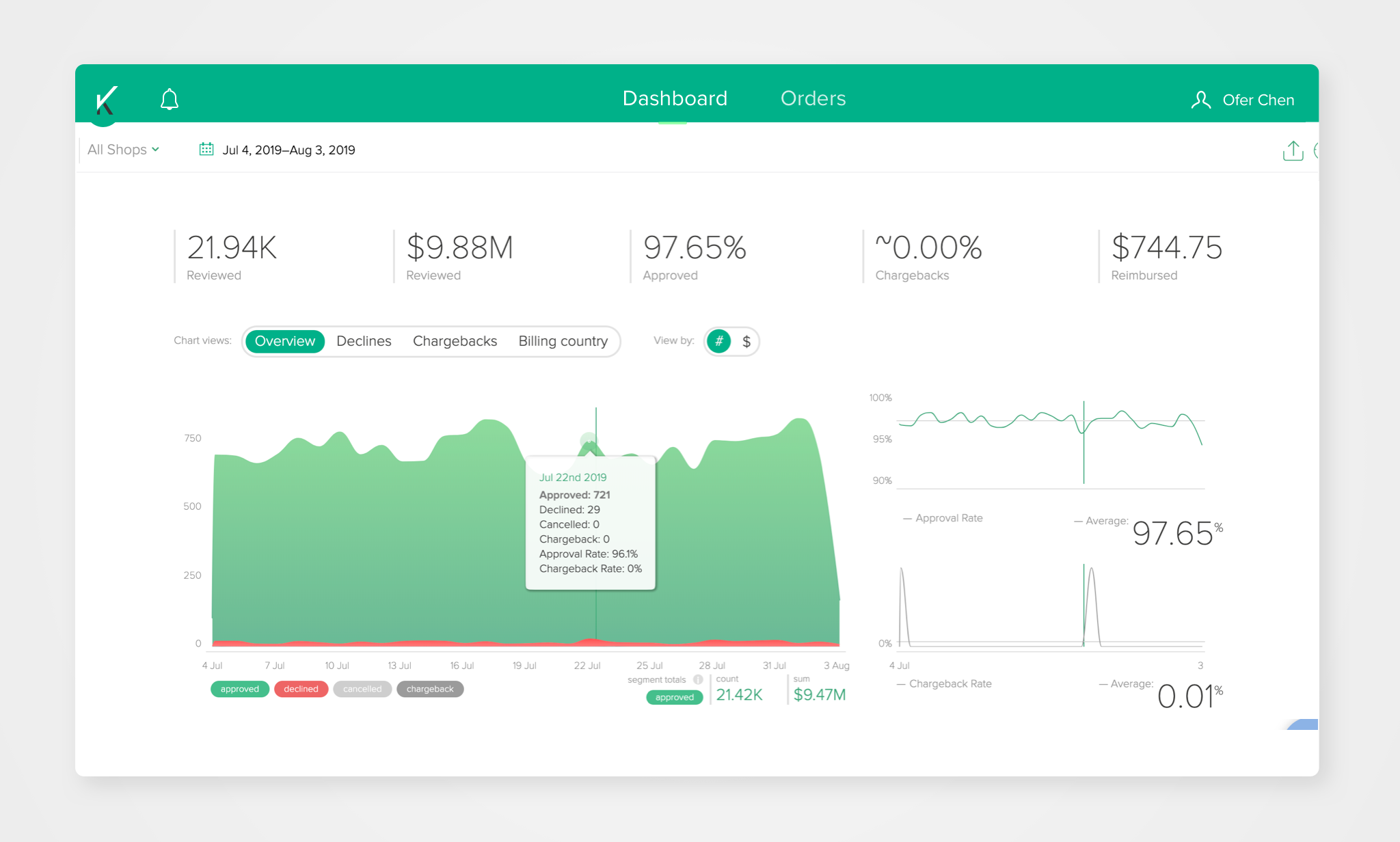
2/ Orders tab
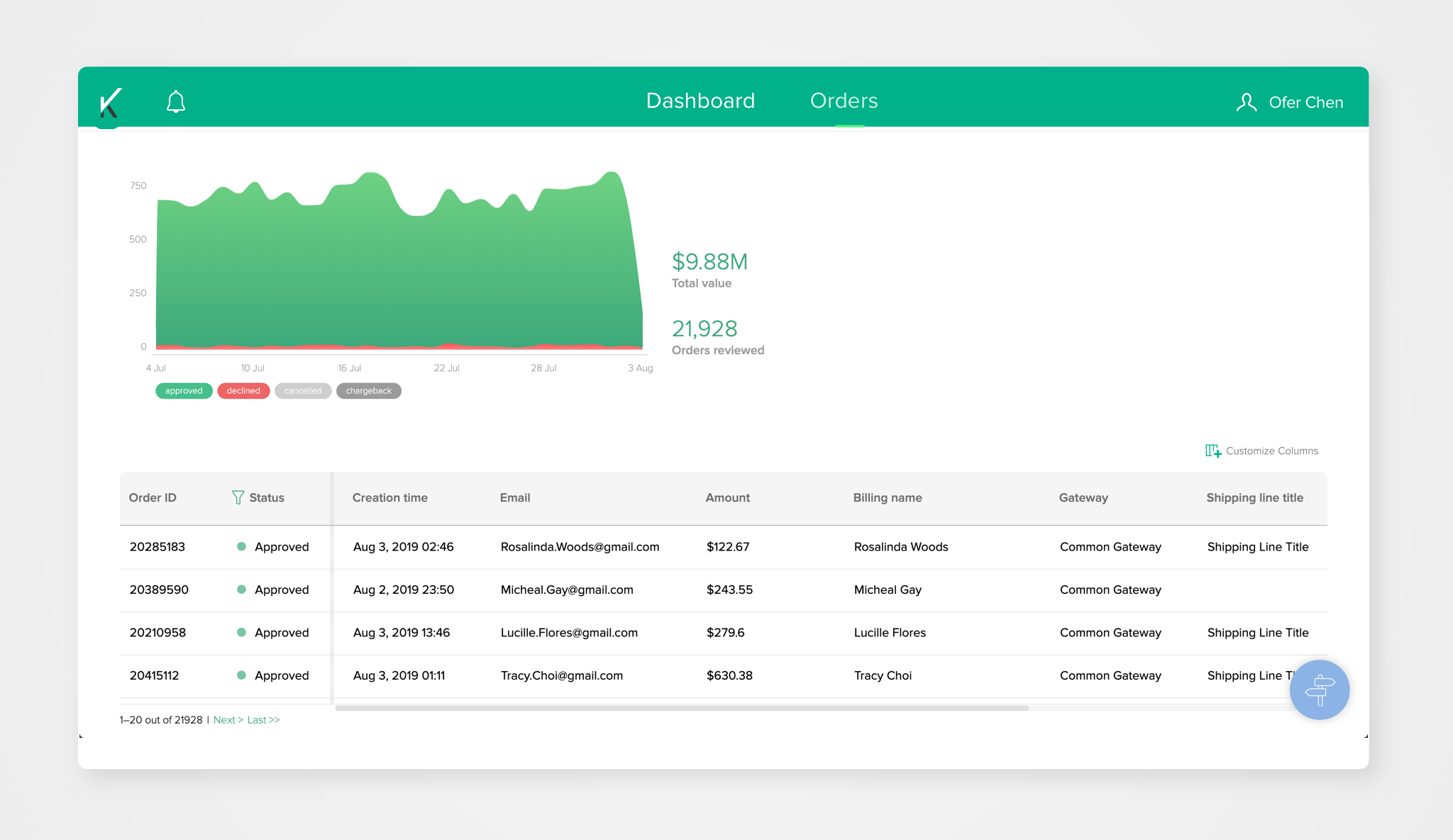
3/ Declined-order view
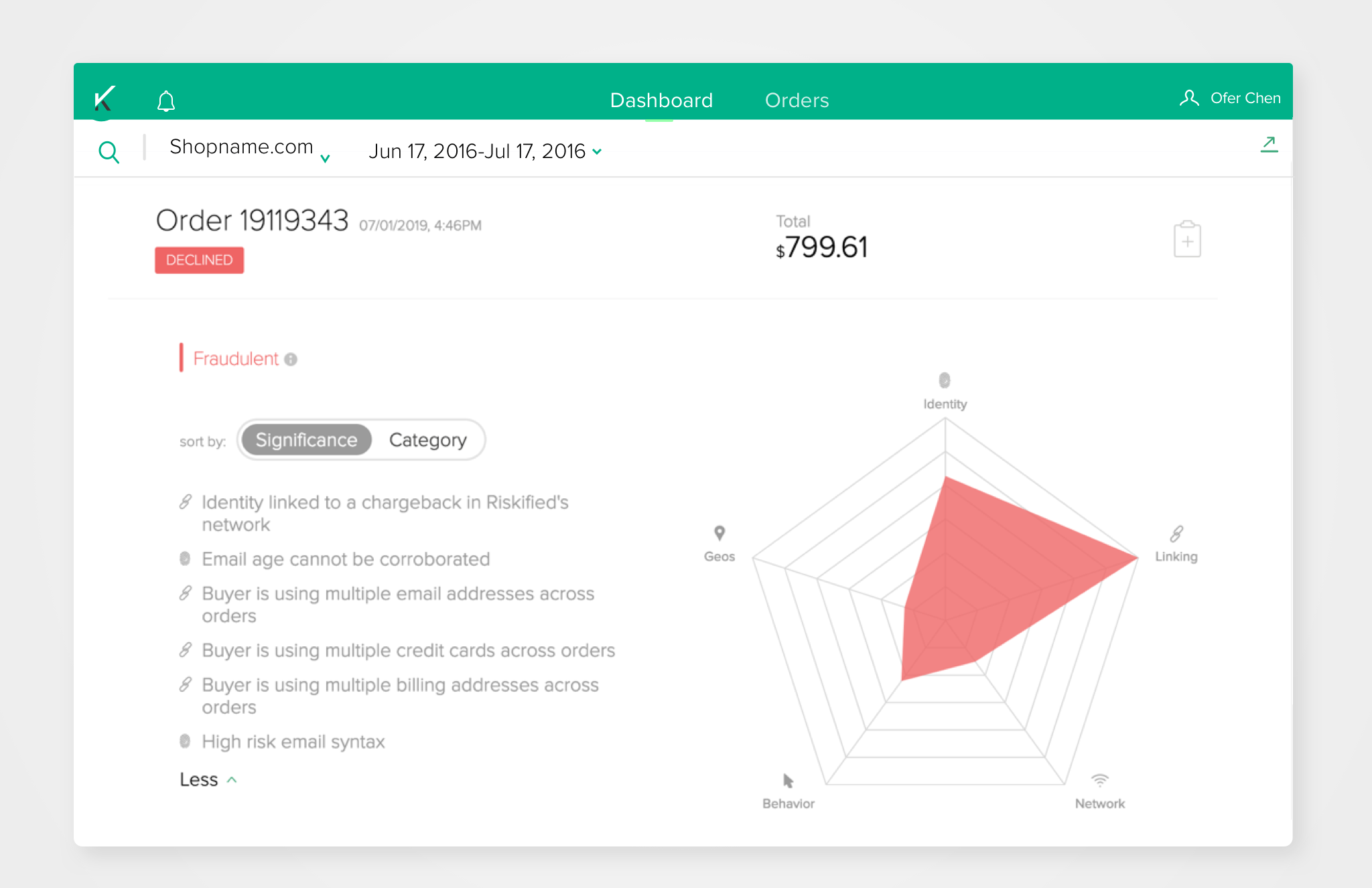
Case study: Post decline flow re-design
Background:
Riskified protects e-commerce merchants against fraud by approving safe orders and declining fraudulent and risky orders. Merchants can view these actions with Riskified’s web app. “Post decline flow” is an in-app action that allows merchants to file a request for reexamination of a declined order if the merchant believes it to be non-fraudulent.
There were some factors that made us to re-think current flow design and optimise it:
- New functional requirement - for each merchant:
such as “No contact” scenario, and an “Override decision” flag - Custom configuration for each merchant:
not all users have access to the same flow or have the
same mandatory sections as others. The flow needs to be customised in an easier way. - Current UX/UI is not appropriate- Horizontal form is not intuitive and requires high maintenance and optimisation for each user.
- What are the users’ pain points?
- Frequently
used actions are complicated to perform
- Want
more self-service solutions instead of contacting support
- Call center agent - After / during the communication with the customer, agent goes to the webapp,
searches for the order and opens the acti
- 2. Fraud agent - Manual review queue
Reviews order
Finds new information Opens the PDF action
- Per each functionality/task performed in UI:
- Frequency of each feature in the flow - Daily
- Cost of mistakes - Contact information and decline override are critical
- Relative Importance and Hierarchy - This is the most “important” action in the webapp
- Reduce number of tickets to support
- Ability to deprecate the old feature
- Ability to customize the form
- Increase usage
- I redesigned the action to be a sectioned vertical flow, that is easy to be customized per user.
- The from is fixed-sized, with a sticky footer.
- I exported the “Override decision” checkbox to be positioned on the footer so in will be constantly revealed. That in porpuse to avoid misunderstandings in cases in which merchant have a default choice active (on/off), and only two mandatory inline sections. (In othe words: So they won’t click the “Sumbit” btn before the went threw all the information provided.)
Old design
![]()
New design
![]()
![]()
![]()
![]()
![]()
![]()

New design
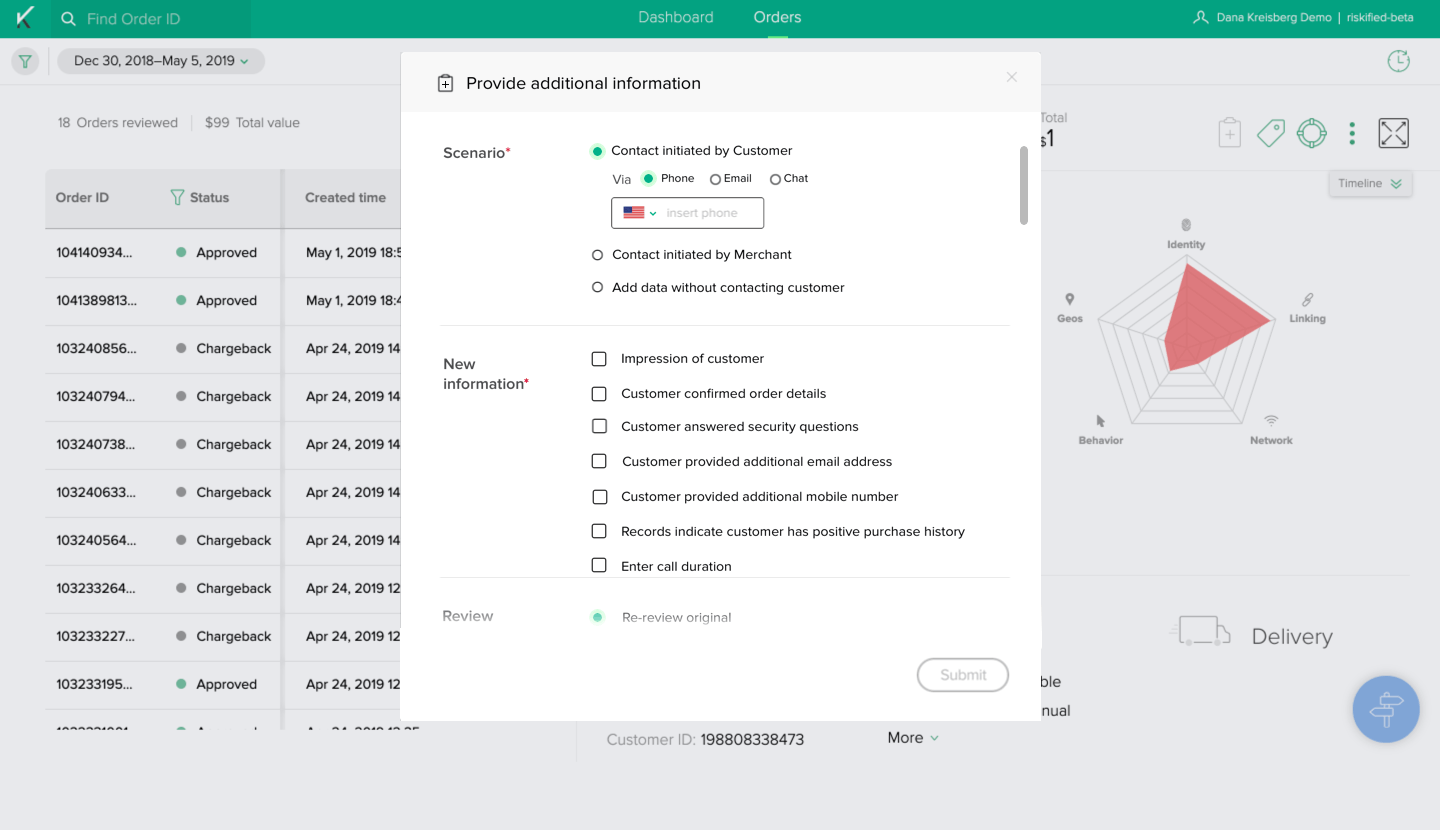





: :
